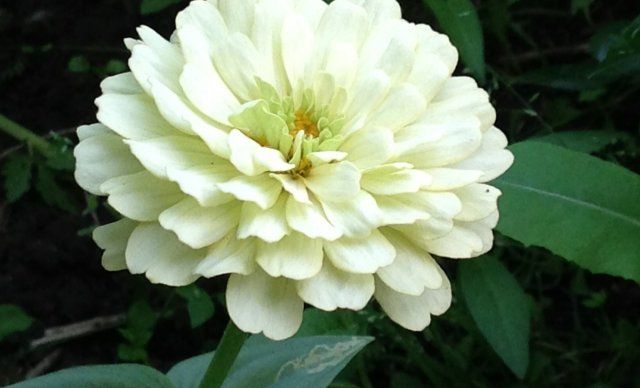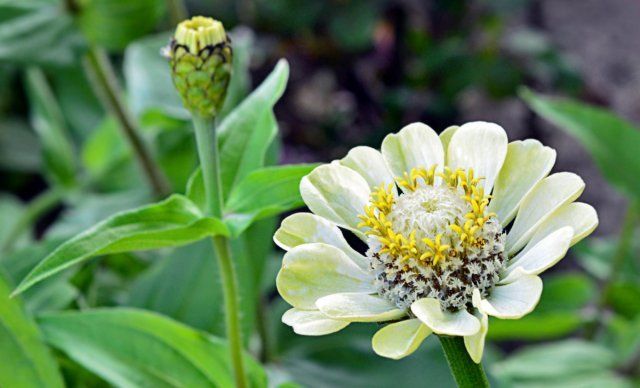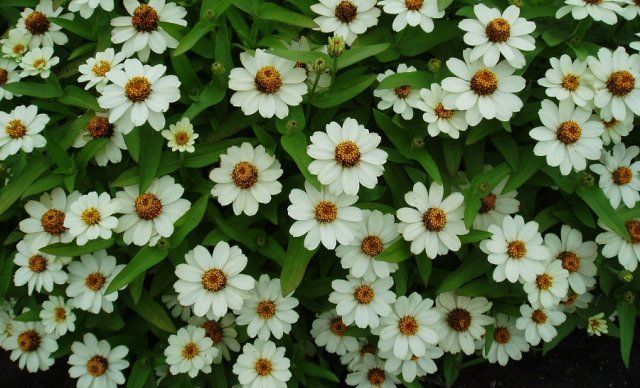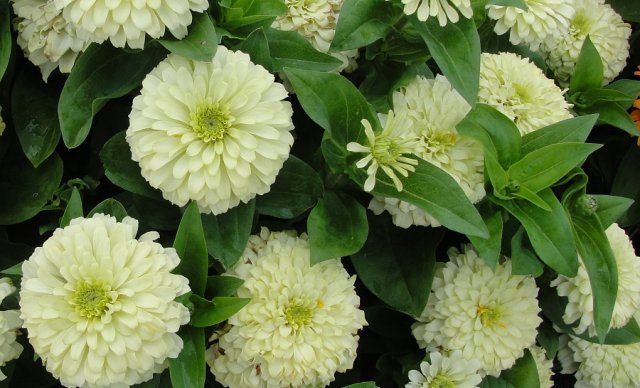Anemones: planting and care, photo of flowers
This type of plant belongs to the genus Anemone. Photos of anemone flowers show purple, blue and bright red hues. In harsh areas, the plant is grown as an annual. The diameter of the flowers is 70-80 mm.
On a note! To decorate bouquets, it is recommended to cut off the buds of anemones, which have not yet fully blossomed and have a weak color. The vase should be filled with water a quarter of the length of the peduncle, and the petals should not be wetted.
 Bright flowers of anemones will decorate any flower bed.
Bright flowers of anemones will decorate any flower bed.
Planting and caring for anemones is fairly straightforward. The tubers are planted in moderately fertile soil in a sunny location to a depth of 5 cm. The soil must be breathable. In infertile soil, the plant will need feeding. It is better if it is a complex-purpose mineral fertilizer, which should be introduced into the soil twice a summer.
Lilies of the valley: photos and care recommendations
A favorite place for lilies of the valley is moist soil, hidden under the dense shade of trees. Perennial tolerates long-term lack of sunlight. But if the shadow is deep, the number of flowers will decrease. Instead, the lily of the valley will grow the deciduous part. Exposure to wind will also not be beneficial, reducing the number of flowers.
On a note! Gardeners recommend planting lilies of the valley along walls and fences.
Hot weather conditions are detrimental to perennials. Don't forget about watering your plants. It is better to completely abandon transplants. A low fence around the flower bed will avoid strong overgrowth.
 Lily of the valley flowers have a pleasant, persistent aroma.
Lily of the valley flowers have a pleasant, persistent aroma.
Zinnia
This charming and unpretentious flower has been popular for more than five hundred years - it is grown in most civilized countries of the world, and it has managed to be a symbol of one of the states in the United States.




Sowing zinnia in the ground in May is possible only if you are sure that the frost will not return. If you are not sure, it is better to grow seedlings and harden them. Zinnia does not like picking, so sow its seeds, previously soaked in Epin's solution, 2-3 pcs. in peat pots. Seedlings love bright light, and at the end of May they are ready to leave for a permanent place. Plant it on sunny, well-fertilized areas since autumn, at a distance of 30 cm from each other. Care consists in watering at the root, loosening and regular fertilizing with mineral fertilizers with a low nitrogen content. You can prolong the flowering of zinnia by regularly removing dried flowers.
Gladioli in the open field: planting and care, features of growth
The exquisite gladiolus is planted in an open area. In this case, wind protection must be present. It is not recommended to place perennials in areas where water can accumulate and stagnate.
In areas characterized by increased dryness and heat, gladiolus will need light shade. The midday sun can be detrimental, so flowers will need protection from high temperatures and direct sunlight. In areas with moderate climatic conditions, even a light shade can cause a drop in the level of decorativeness and delay in flowering.
 Gladioli are traditional flowers in summer cottages.
Gladioli are traditional flowers in summer cottages.
Gladiolus responds well to sandy loam soil, which must first be processed 20-30 cm deep and infused with organic fertilizer.
Anemone care: feeding
The subsequent cultivation of anemones in the open field will not cause much trouble, but you should not forget about flowers either.
In order for the plants to please with lush and abundant flowering, it is important to make top dressing in a timely manner. The first time you need to feed when the first green leaves appear
This will require nitrogen-containing drugs. You can feed it with chemical fertilizers, but, as a rule, ordinary organic matter is chosen. For example, rotted mullein mixed with ash.
The second time is fed during the formation of buds. Complex mineral fertilizer is required here. So there will be more flowers, and the flowering will be longer.

If the tubers remain in the soil for the winter, then in the fall the plants can be fed with fertilizers without nitrogen.
Climbing rose: planting and caring for the plant
Climbing roses are suitable for creating a romantic atmosphere on almost any site. This perennial cannot do without sunlight, so it is better to organize planting in an open area with a good level of ventilation. Swampy and lowland areas are not suitable for growing roses.
 A climbing rose is planted near fences, pergolas or arches.
A climbing rose is planted near fences, pergolas or arches.
It is not recommended to break the bushes in the place where the flower bed was previously, otherwise the plant will not take root. To avoid the death of roses, it is recommended to plant them on slopes or hills. This will relieve the soil in the growth zone of the bushes from waterlogging, which often occurs during rainy periods or in areas with groundwater lying near the surface.
An example of a successful planting scheme in a country flower bed
An example of a successful planting scheme in a country flower bed
Low-growing annuals always look very advantageous next to conifers. In the photo, the flowers are positioned correctly: snapdragon, salvia and escholzia are slightly higher in size - the designer placed them farther away. And undersized arctotis, petunia and verbena are perfectly placed in the near tier. Thus, no one bothers anyone to take sunbathing, because all these plants love bright and long-lasting lighting. The color scheme is also optimal: monochromatic escholzia, petunia and salvia balance the colorful splashes of snapdragon and verbena.
Creating your own little paradise on earth, you can never be guided only by the first impulse and thoughtlessly drag everything into the garden. Flowers also have their own character and preferences, so you should first study them, and then place them so that they are happy with their existence next to you.
Tuberous perennials: corydalis, gladiolus, crocosmia
Corydalis (CORYDALIS). The Dymyankov family.
Perennial tuberous corydalis are mainly low (10-30 cm) plants with a tuber, growing in temperate deciduous forests. The leaves are green, often bluish, appear in early spring and die off by the end of May, that is, these are typical ephemeroids. Flowers are collected in a raceme at the top of the stem, bloom in May, in June - bear fruit, form self-seeding.
Types and varieties:
More often than other species, the corydalis (C. cava) is grown with delicate, repeatedly divided leaves and lilac flowers.
Marshall's Corydalis (C. marchalliana) - mostly with creamy yellow flowers.
Haller's Corydalis (C. halleri) - pinkish-purple flowers.
Corydalis (C. bracteata) - large light yellow flowers.
Growing conditions. Shady places with loose forest soils.
Reproduction. Seeds (sowing freshly harvested) and tubers. Planting at the end of summer to a depth of 5-7 cm. Planting density - 25 pcs. per 1 m2.
Shady areas are suitable, among shade-loving forbs, in "natural garden" type plantings.
Gladiolus, skewer (GLADIOLUS). Iris family.
The name comes from the Latin gladus - "sword" and is given by the shape of the leaves of this plant. There are about 200 species in the genus, all of them tuber-bulbous.
The corm is flattened, lives one season. It is renewed due to tuber-onion-children.
Perennials with xiphoid leaves, erect stem, bearing an inflorescence-ear with 10-30 funnel-shaped flowers at the top.
Thousands of varieties of these tuberous plants are known, but they are divided into 5 groups:
- by the size of the flower (giant - the diameter of the flower is more than 14 cm, large-flowered - 11-13 cm, medium - 9-11 cm, small - 6-9 cm, miniature - less than 6 cm);
- by color, the varieties are divided into 13 classes (white, green, yellow, orange, salmon, salmon pink, red, raspberry, pink-lilac, purple, chestnut, smoky, brown);
- according to the flowering period, early (blooming from the end of July), medium (from mid-August), late (from the end of August) are distinguished. One peduncle blooms for about 10 days.
According to the arrangement of flowers in the inflorescence, groups are distinguished: single-row, double-row, alternate, double-sided, spiral.
Pay attention to the photo of these tuberous flowers: gladioli, among other things, differ in the shape of the petals: they can be simple, corrugated, folded and dissected. Types and varieties:
Types and varieties:
Gladiolus hybrid (G. xhybridus), which is mainly grown by flower growers, is created as a result of complex hybridization with the participation of African species. Types of gladiolus of temperate flora are rarely used, since they have small, rapidly fading flowers.
But species such as the tiled gladiolus (G. imbricatus) can be used in "natural garden" type flower beds.
These tuberous garden flowers are best grown in separate flower beds. But lower grades can be used in mixborders.
Crocosmia, montbrecia (CROCOSMIA = MONTBRETIA). Iris family.
They are perennial tuberous flowers with narrow xiphoid leaves and funnel-shaped orange-yellow flowers. Height 50-60 cm. In central Russia, mainly cultivars are grown. They have small (2 cm) corms, which form numerous underground stolons, and on them are young plants.
Known varieties:
"Star of the East" - with pale orange flowers.
"Chees Madgest" - with orange-scarlet flowers.
"CitroneLLa" - lemon-yellow flowers.
Growing conditions. Protected from the wind, sunny areas with loose, rich, well-drained soils. For the winter, it is necessary to cover with spruce branches or fallen leaves of oak, maple, it is possible to use a thin non-woven covering material.
Reproduction. Seeds, children - in the spring. Seedlings bloom in the 3rd year. Planting density - 16 pcs. per 1 m2.
Yarrow: photo of an unpretentious and medicinal plant
Yarrow is very popular among the owners of suburban areas involved in flower bed decoration. Its inflorescences have a bright color (red, white, pink, orange, cherry, yellow), retain their attractiveness for a long time, and the plant itself is considered medicinal.
There are almost two hundred varieties of this perennial. The places of its natural habitat are mountain meadows, rocky and rocky terrain, glades, which ensured the high resistance of the plant.
 Yarrow has medicinal properties.
Yarrow has medicinal properties.
On a note! Yarrow is not only able to withstand sudden temperature changes, it can tolerate periods of prolonged drought normally.


